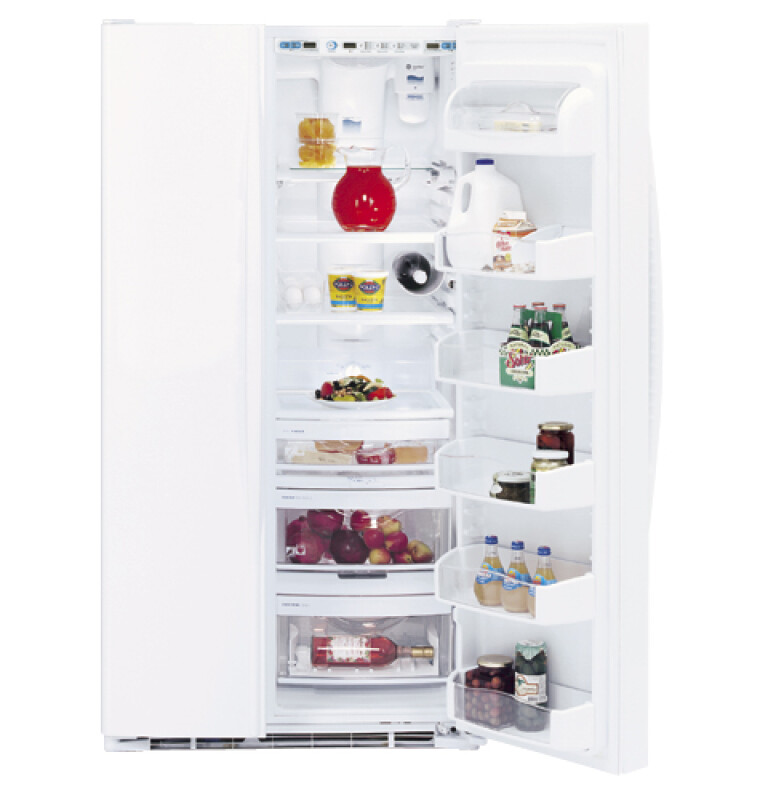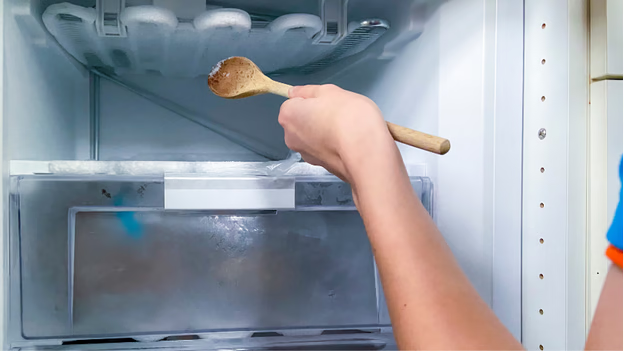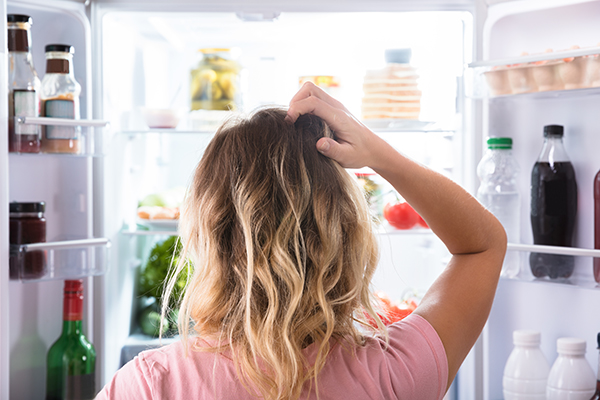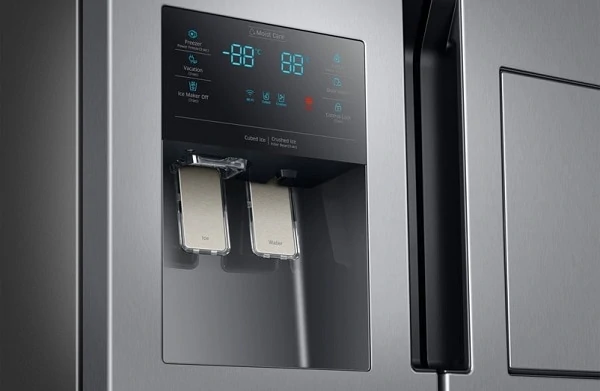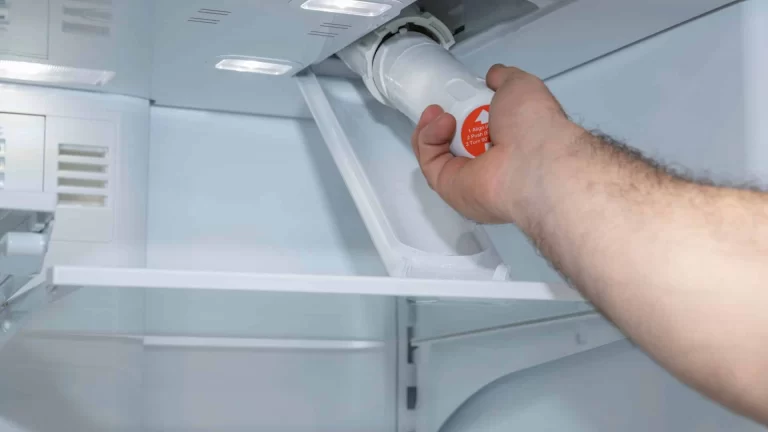Struggling with a Whirlpool refrigerator not cooling or freezing properly? This issue can turn your life upside down, spoiling your food and causing unnecessary stress. Don’t worry! Our comprehensive guide will delve into the common causes and remedies, turning your refrigerator woes into a thing of the past. Whether you’re a DIY enthusiast or someone seeking a better understanding of their appliance, we’re here to provide valuable insights to help you navigate this problem efficiently.
If your Whirlpool refrigerator isn’t cooling or freezing, it could be due to issues like dirty condenser coils, faulty evaporator fan, or thermostat problems. Other causes can be a defective defrost system, blocked vents, damaged seals, or a refrigerant leak.
Quick Troubleshooting Guide
| Issue | Symptoms | Fixes |
| Dirty Condenser Coils | The refrigerator is not cool enough or runs constantly. | Clean the condenser coils with a brush or vacuum. |
| Faulty or Blocked Evaporator Fan | Warm fridge but cool freezer, unusual noises from the fan. | Check for blockages, if the fan doesn’t run smoothly, it may need replacement. |
| Start Relay/Capacitor/Compressor | The refrigerator is warm, clicking sound from the back. | Due to high voltage, it is advised to call a professional repair service. |
| Thermostat Issues | The refrigerator is too cold or too warm, unresponsive controls. | Try adjusting the thermostat, if no change occurs, it might be faulty – professional help may be needed. |
| Defrost System Problems | The refrigerator is warm, excessive frost in the freezer. | If frost is accumulating, it’s likely the defrost heater is faulty – professional repair recommended. |
| Faulty Door Seals (Gaskets) | Condensation or mildew around door, fridge runs more often. | Clean gaskets, apply petroleum jelly, or replace them if damaged. |
| Blocked Air Vents | One compartment is warmer than the other. | Check for any blockages in the vents and reorganize as necessary. |
| Temperature Control Board | The refrigerator doesn’t cool, compressor and fans don’t run. | This is a complex electrical issue, professional help is advised. |
| Refrigerant Leak | The refrigerator and freezer are warmer than usual, hissing sound. | This should be handled by a professional due to environmental regulations. |
Understanding the Problem
The purpose of a refrigerator is simple—keep your food cold. Cold temperatures slow down the bacterial growth that makes food spoil. According to the U.S. Food and Drug Administration (FDA), refrigerators should maintain a temperature of 40°F (4.4°C) or below, a range that slows bacterial growth most effectively. Freezers, on the other hand, should maintain a temperature of 0°F (-18°C). When your refrigerator fails to maintain these temperatures, it can lead to rapid food spoilage and pose serious health risks.
Common Causes of a Whirlpool Refrigerator Not Cooling or Freezing

1. Dirty Condenser Coils
Issue: The condenser coils dissipate heat as the refrigerant passes through them. If they’re covered in dust or debris, they won’t be able to dissipate heat effectively. This causes the entire system to work harder, which might result in the refrigerator not cooling properly.
Symptoms: The refrigerator is not cool enough, or the refrigerator runs constantly.
Fixes:
- Unplug your refrigerator.
- Locate the condenser coils, usually at the back or underneath the refrigerator.
- Use a refrigerator coil brush or vacuum cleaner to gently remove the dust and debris from the coils.
- Plug the refrigerator back in and monitor to see if the cooling improves.
2. Faulty or Blocked Evaporator Fan
Issue: The evaporator fan circulates the cold air from the coils throughout the refrigerator. If the fan is blocked or faulty, it won’t distribute the cold air, resulting in the refrigerator or freezer not cooling as it should.
Symptoms: Warm fridge but cool freezer, or unusual noises from the fan area.
Fixes:
- Unplug your refrigerator.
- Locate the evaporator fan, typically in the freezer compartment.
- Check for any visible blockage and remove it if possible.
- If the fan does not turn freely, or it’s unusually noisy, it may need to be replaced. Consult with a professional.
3. Start Relay, Start Capacitor, and Compressor Issues
Issue: The start relay, start capacitor, and compressor work together to start the compressor, the heart of your refrigerator’s cooling system. If any of these components are faulty, the compressor may not start, and your refrigerator won’t cool.
Symptoms: The refrigerator is warm, or you hear a clicking sound from the back of the refrigerator.
Fixes: Due to the high voltage capacitor, it can be dangerous to handle these parts without the right training. It is advised to call a professional refrigerator repair service.
4. Thermostat Issues
Issue: The thermostat regulates how much power goes to the fan and compressor. If your thermostat is broken, it may not be able to regulate power, causing the refrigerator to be too warm or too cold.
Symptoms: The refrigerator is too cold or too warm, and adjusting the temperature control does not change the temperature.
Fixes:
- Try adjusting the thermostat to a colder setting. If the refrigerator does not get colder in the next 24 hours, the thermostat might be faulty.
- Replacing a thermostat involves working with electrical parts and should be done by a professional.
5. Defrost System Problems
Issue: Modern refrigerators defrost automatically in a process that involves heating elements and timers. If any part of this system malfunctions, your refrigerator can become too warm or start building up frost.
Symptoms: The refrigerator is warm, or there is excessive frost build-up in the freezer.
Fixes: If your frost-free refrigerator is accumulating frost, it’s likely the defrost heater is faulty. This component is typically located behind the back panel of the freezer. Replacing it involves unplugging the refrigerator, removing the freezer’s contents and shelves, removing the back panel, and replacing the heater. Because of the complexity of this task, it’s usually best to hire a professional.
6. Faulty Door Seals (Gaskets)
Issue: The door seals, also known as gaskets, ensure the refrigerator remains airtight when closed, keeping the cold air inside and warm air out. If these seals are damaged, cracked, or dirty, they can allow warm air to seep into the refrigerator, causing it to overwork and not cool properly.
Symptoms: You might notice condensation or mildew around the door edges, or feel warm air around the closed door. Your refrigerator might also run more frequently than normal.
Fixes:
- Clean the gaskets with warm, soapy water and a soft cloth. Dry them thoroughly.
- Apply a thin layer of petroleum jelly to the gaskets to keep them supple and seal better.
- If the gaskets are damaged, they should be replaced. Depending on the model, you might be able to do this yourself, or you may need to call a professional.
7. Blocked Air Vents
Issue: Air vents between the freezer and refrigerator compartments allow the cold air to circulate. If these vents are blocked, they can prevent the proper circulation of cold air, leading to insufficient cooling.
Symptoms: One compartment (usually the refrigerator section) is warmer than usual while the other is at the correct temperature.
Fixes:
- Check for any visible blockages, like bags of food, that might be obstructing the vents and reorganize as necessary.
- Avoid overpacking your fridge or freezer, as this can prevent proper air circulation.
8. Temperature Control Board
Issue: The temperature control board provides voltage to the compressor and fan motors. If it’s faulty, it might not send enough voltage, causing the refrigerator to not cool properly.
Symptoms: The refrigerator doesn’t cool, and the compressor and fans don’t run.
Fixes: This is usually a complex issue that involves working with electrical parts. If you suspect your temperature control board might be the problem, it’s best to call a professional.
9. Refrigerant Leak
Issue: Refrigerant is the substance that your refrigerator uses to remove heat from the inside. If there’s a leak in the system, there won’t be enough refrigerant to cool the air.
Symptoms: The refrigerator and freezer are warmer than usual, even at the highest settings. You might also notice a hissing sound, which is the refrigerant escaping.
Fixes: Due to the nature of this issue and environmental regulations, a refrigerant leak should be handled by a professional.
Diagnosing Whirlpool Refrigerator Issues
Before we dive into solutions, it’s important to first diagnose the issue. Some issues might require professional help, but there are several checks you can do at home.
You can visually inspect the condenser coils for dirt and the evaporator fan for blockages. Listen for any unusual noises that could indicate issues with the compressor or the start relay.
You can also check if the temperature inside the refrigerator is inconsistent, which could indicate a thermostat issue. Finally, if your refrigerator is frost-free but has frost buildup, you might be dealing with a defrost system problem.
Remember, refrigerators are complex machines with electrical and plumbing components. If you’re not comfortable performing these checks yourself, or if the checks don’t reveal the problem, it’s best to call a professional refrigerator repair service.
Preventative Measures and Regular Refrigerator Maintenance

Prevention is often the best cure. Regular maintenance can prevent many of the common issues that can cause a Whirlpool refrigerator to stop cooling or freezing:
Regular Checkups and Cleaning: Clean the condenser coils every six months to ensure they can effectively dissipate heat. Regularly check the evaporator fan for any blockages as well.
Proper Usage: Avoid overfilling your refrigerator, as this can block the air vents and restrict the cold air flow. Also, ensure the refrigerator doors are sealing properly. If the seals are loose, they allow warm air inside, making the refrigerator work harder.
Invest in Original Parts: If you need to replace parts in your refrigerator, always invest in original Whirlpool refrigerator parts. These are designed to work best with your appliance.
Consider Replacement: Most refrigerators last between 10 to 20 years. If your Whirlpool refrigerator is older and needs frequent repairs, it might be more cost-effective to replace it.
FAQs
What is the first thing I should check if my Whirlpool refrigerator is not cooling or freezing?
Always begin by checking the simplest potential causes first. These include making sure the refrigerator is plugged in and the thermostat is set to the correct temperature. Also, ensure the vents are not blocked, and the door seals are intact and clean.
How often should I clean the condenser coils of my refrigerator?
As a general rule, you should aim to clean the condenser coils of your refrigerator at least twice a year. However, if you have pets or if the refrigerator is in a dusty area, you may need to clean the coils more frequently.
Is it safe to handle the electrical components of the refrigerator by myself?
If you’re not familiar with handling electrical components, it’s generally best to call a professional. Mishandling these parts can lead to further damage or even personal injury.
What should I do if I suspect a refrigerant leak in my refrigerator?
A refrigerant leak can be dangerous and is bad for the environment, so it’s best to immediately contact a professional if you suspect a leak. It’s not something you should attempt to fix yourself.
When is it more cost-effective to replace my Whirlpool refrigerator rather than repair it?
If your refrigerator is older (usually over 10-15 years old), if it requires frequent repairs, or if the cost of repair is more than half the cost of a new refrigerator, it might be more cost-effective to replace it. Consider factors like energy efficiency as well; newer models may save you money on utility bills in the long run.
Conclusion
In conclusion, a Whirlpool refrigerator not cooling or freezing is a problem you can tackle with the right knowledge. This guide has detailed the various causes and practical solutions, equipping you with the tools to restore your appliance’s functionality. Remember, while DIY can fix some issues, don’t hesitate to call a professional when necessary to ensure your refrigerator keeps serving you optimally for years to come.


